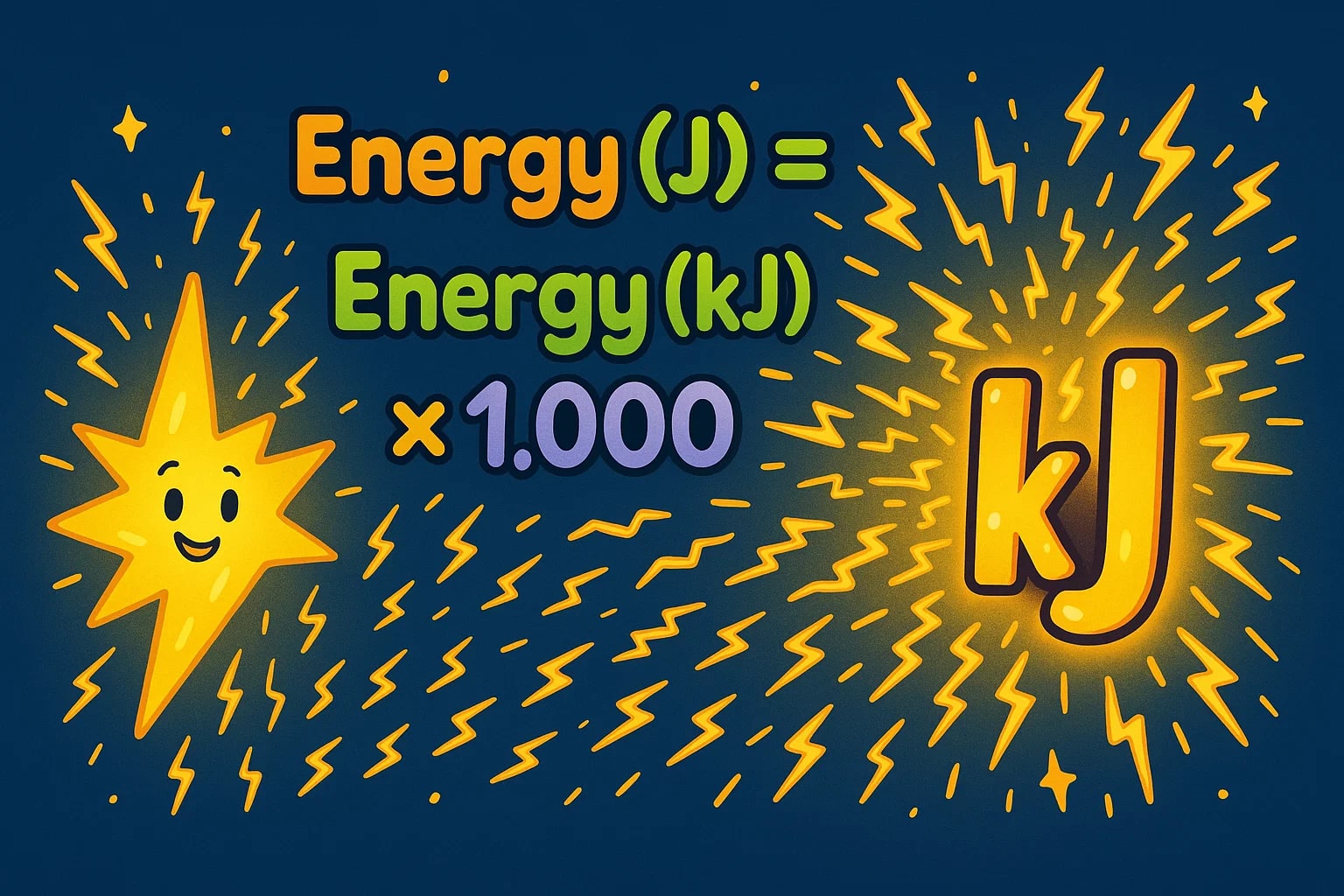joule to kilojoule – How to convert J to kJ
The conversion from joule to kilojoule is one of the simplest within the SI system, yet it’s essential in fields like nutrition, physics, and engineering.
What is a joule?
A joule (J) is the SI unit of energy, defined as the work done when a force of one newton moves an object one meter.
Formula:
1 J = 1 N × 1 m
or
E = ½mv²
Joules are used in physics, engineering, and chemistry for precise scientific measurements.
What is a kilojoule?
A kilojoule (kJ) equals 1 000 joules. It’s often preferred for expressing larger amounts of energy, making numbers easier to read and understand.
Formula:
1 kJ = 1 000 J
In nutrition, appliance ratings, and larger-scale energy calculations, kilojoules are the go-to unit for readability.

How to convert joule to kilojoule
Since both are SI units, the formula is straightforward:
Energy (kJ) = Energy (J) ÷ 1 000
Example:
If you have 12 000 J, then
Energy = 12 000 ÷ 1 000 = 12 kJ
To go in reverse:
Energy (J) = Energy (kJ) × 1 000
Instantly switch between units with our Energy Converter, or browse the complete range of measurements in the Conversion Tools section.
Do you know?
-
Joule fact: The joule is the base SI unit for energy, named after James Prescott Joule, whose experiments in the 1840s linked mechanical work and heat.
-
Kilojoule fact: Many countries, including Australia and New Zealand, list food energy in kilojoules instead of calories, making kJ the daily reference unit on nutrition labels.
-
Joule fact: One joule equals the energy needed to push a 1 kg object with 1 newton of force over a distance of 1 meter.
-
Kilojoule fact: A medium-sized banana contains about 370 kJ of chemical energy, which equals 370 000 joules.
From Science to the Supermarket: Why Food Labels Use Kilojoules
In scientific research, the joule is the exact measure for energy. But walk into a grocery store in Australia or Europe, and you’ll find food labels listing kilojoules instead. Why the switch?
The answer lies in readability. While 500 000 joules accurately describes the energy in a chocolate bar, the number looks large and intimidating on packaging. Expressing it as 500 kJ makes it simpler and easier to compare with daily intake recommendations.
In nutrition science, both joules and kilojoules are used depending on context. Dietitians might discuss daily requirements in kilojoules, while lab experiments on metabolism record energy use in raw joules for precision.
This dual use mirrors what happens in other fields: engineers may design an appliance using joules to track minute energy flows in components, but the final product’s energy rating is shown in kilojoules so consumers can make quick comparisons.
One example is the standardized Daily Energy Intake Guide printed on packaged foods. In Australia, it’s set at about 8 700 kJ per day for an average adult. If expressed in joules, that’s 8.7 million — still correct, but far less practical for quick reference.
The kilojoule offers the perfect compromise: it keeps the SI base unit connection intact while presenting the number in a form people can process instantly.

From Exact Numbers to Everyday Use
Converting joule to kilojoule is more than a math exercise — it’s about presenting energy in a way that fits the context. The kilojoule takes the precision of the joule and frames it in a scale that’s easier for people to interpret, whether on a food label or in a household appliance guide.
By moving between J and kJ as needed, scientists, engineers, and consumers can all work from the same facts, just expressed in the format that makes the most sense for the task at hand.

